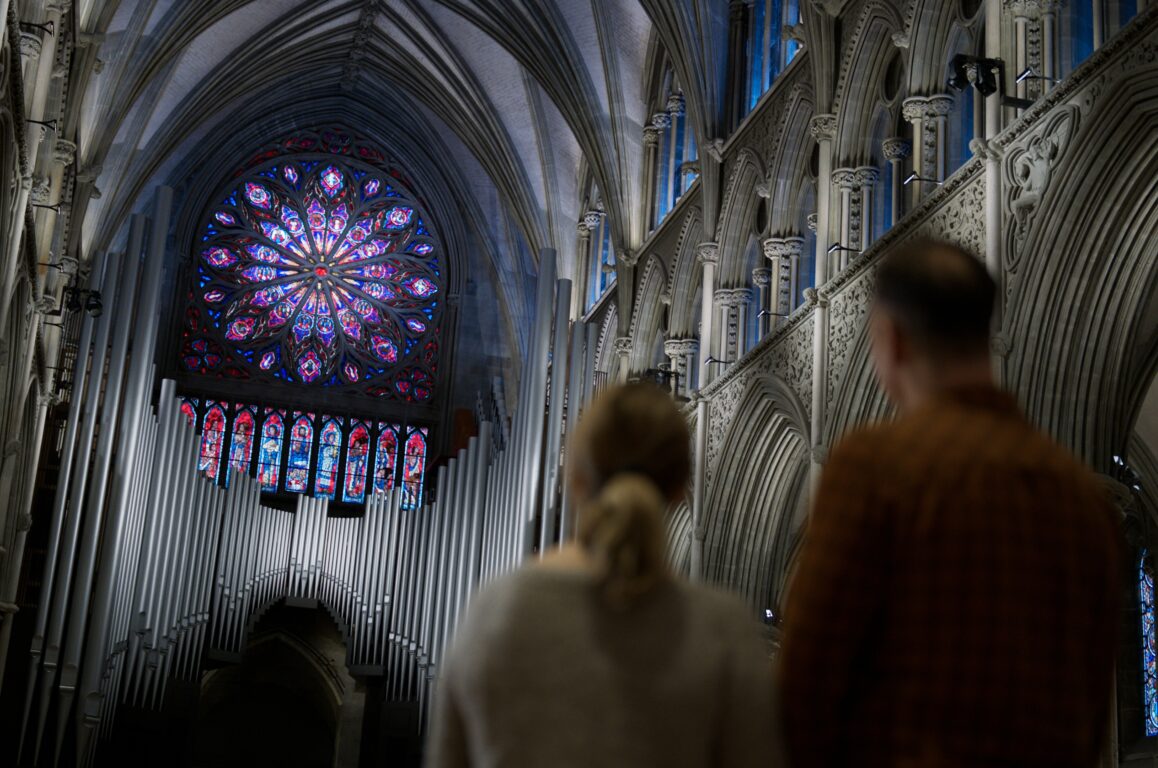St. Olav Ways - The Pilgrim Paths to Trondheim
Pilegrimsleden, also known as St. Olav Ways, is a network of nine historical trails in Norway. They all lead to St. Olav's burial place, Nidaros Cathedral in the city of Trondheim. For many people a pilgrimage also offers an inner journey, time to think and to find peace. They say it's an experience of a lifetime!

Photo: Øystein Moe/Helmet
Recommended paths
The nine different pilgrim trails to Nidaros Cathedral are beautiful in their own way, but the most developed trails are Gudbrandsdalsleden that goes from the capital Oslo to Trondheim, and St. Olavsleden that starts in Sweden. They are both well marked, and you will find accomondation and other necessities on the way.

Photo: Øystein Moe/Helmet
Explore Gudbrandsdalsleden
Gudbrandsdalsleden was the main road to Nidaros in the Middle Ages. Follow in the footsteps of thousands of pilgrims who have walked here before you, and let yourself be inspired by a diverse natural and cultural landscape.

Photo: Øystein Moe/Helmet
Explore St. Olavsleden

Photo: Øystein Moe/Helmet
How to plan your pilgrimage?

Photo: Øystein Moe/Helmet
An inner journey
In the Middle Ages, most pilgrims were religiously motivated, although no doubt some were out for adventure or otherwise motivated. Today, there are many different motivations for embarking on a pilgrimage. Exciting landscapes, unspoiled nature and good hiking trails tempt many of those who set out on the Pilgrim Paths. Another strong motivation is the urge to connect with the past and meet interesting people on the way.
In addition to all these strong experiences that characterize the outer walk, the pilgrim path offers an inner journey. A pilgrimage does something to person, regardless of faith and religious background, there are few who do not undergo a mental change on this trip.
Walking in the footsteps of people who have walked this path in sorrow and joy, hope and despair, for hundreds of years, affects those who walk the same path. Reaching the goal, the mighty Nidaros Cathedral, after walking for so long is a powerful and unforgettable experience that the pilgrims carry with them on the way home and on through life.

Photo: Øystein Moe/Helmet
Nidaros Cathedral - the northernmost pilgrimage destination
After years in viking, Olav Haraldsson returned to Norway with a mission to unite the country into one Christian kingdom. July 29th in 1030, King Olav was killed in the Battle of Stiklestad.
Legend has it that after his death, miracles happened both on the battlefield and around the King’s grave in Trondheim. The following year Olav was declared a saint, and a church was built at the site of his grave.
Over the next two hundred years The city became seat of the archbishop, the original church rebuilt into a large cathedral, and St. Olav`s resting place in the cathedral became the most important pilgrimage site in Northern Europe.



